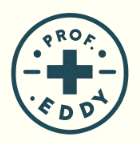Unlock Your Health: The Inevitable Emergence of 8 Constitutions from 5 Elements in 3D Space
Are you curious about how ancient wisdom intertwines with modern science? Perhaps you’ve pondered the profound connections between the universe and human physiology. Today, we’ll delve into a fascinating concept that explains the fundamental reasons behind the 8 Constitutions, drawing insights from the movements of the Five Elements in a three-dimensional world. This exploration will show you how something as seemingly abstract as the Five Elements leads directly to the precise understanding of human body types.
As a child, it was common for boys in Korea to aspire to careers in engineering and science, driven by the nation’s focus on technological advancement. I was no exception, fascinated by physics and astronomy, leading me to a science-focused high school. However, a turning point led me to study Korean Traditional Medicine. While adapting to a new academic environment after 18 years of Western natural sciences was challenging, my openness to new knowledge eventually allowed me to integrate well.
During my student years, I often questioned the relevance of Yin-Yang and the Five Elements in the 21st century, wondering why ancient philosophy was used to analyze the human body. Yet, with time and deeper understanding, I developed immense reverence for the wisdom of people from an era before written language. It’s truly astonishing how profound their insights were, especially concerning the natural world and human health.
Why Can the Five Elements Explain All Actions?
The Five Elements – Wood, Fire, Earth, Metal, and Water – are not static concepts but dynamic forces, each possessing specific(movement properties) and forming essential pairs. Understanding these pairings is crucial to grasping their impact on biological systems. This framework helps us understand the roots of the 8 Constitutions.
Let’s break down these movements:
-
Wood (木): Possesses the attribute of gathering inward.
-
Metal (金): Possesses the attribute of dispersing outward.
-
Water (水): Possesses the attribute of descending downward.
-
Fire (火): Possesses the attribute of ascending upward.
-
Earth (土): Possesses the attribute of returning to the origin.
Imagine these attributes as movements along spatial axes in a 3D coordinate system. This perspective, though not found in traditional textbooks, helps visualize their dynamic interplay:
-
Water: Tends to move in the negative direction along the z-axis from the origin (descent).
-
Fire: Tends to move in the positive direction along the z-axis from the origin (ascent).
-
Wood: Tends to approach the origin along the x-axis (gathering).
-
Metal: Tends to move away from the origin along the x-axis (dispersing).
You might wonder, “Why do we need a y-axis?” This is where the concept of continuous change comes in.
Outwardly, a stationary object appears to be still, but it’s actually a wave, constantly vibrating and rotating. In a strict sense, nothing in the universe is truly stationary; it only appears that way because the observer and the object are moving at the same speed. All matter vibrates, moves, changes, and fluctuates.
This continuous process of change gives rise to the concept of time. As movements deviate from the x and z axes, a tendency to move in another direction (to change) emerges, which is represented by the y-axis. Thus, the Five Elements are not fixed coordinates but ceaselessly moving dynamics.

What is the Role of Earth (土)?
In this 3D framework, the movements of Wood-Metal and Water-Fire represent fundamental spatial dynamics, with time introducing the concept of change. The Earth element plays a crucial role: it facilitates the direction of change.
From a chemical perspective, Earth embodies neutralization. It’s no coincidence that the Earth is where most detoxification processes occur naturally.
This explanation might seem unconventional, as it’s derived from a scientific viewpoint rather than traditional texts. You can gloss over the detailed physical interpretation if it’s too complex, as the core conclusion is what truly matters.
The Human Body and the 8 Constitutions
The human body, as a life form within a 3D space, inherently manifests these Five Element movements:
-
Wood: The tendency to gather, associated with the Liver.
-
Metal: The tendency to disperse, associated with the Lungs.
-
Water: The tendency to descend, associated with the Kidneys.
-
Fire: The tendency to ascend, associated with the Spleen.
-
Earth: The mediating force, associated with the Heart.
These organs form pairs—Liver:Lungs and Kidneys:Spleen. The relative strength and balance of these pairs, determined by the Five Elements’ dynamic interplay, directly give rise to the Four Body Constitutions (Sasang) and subsequently the 8 Constitutions (Palchejil).
For example, in Sasang constitutional medicine:
-
greaterYang (Tae-yang): Strong Lungs, weak Liver
-
greaterYin (Tae-eum): Strong Liver, weak Lungs
-
lesserYang (So-yang): Strong Spleen, weak Kidneys
-
lesserYin (So-eum): Strong Kidneys, weak Spleen
The 8 Constitutions further refine these types, offering even more precise classifications based on the specific balance of internal organ functions. This sophisticated system allows for personalized health strategies and treatments.
It’s tempting to say, “It’s so simple, isn’t it?” but I feel my explanation still leaves room for improvement, and I continue to refine my understanding.
This exploration aimed to clarify why the Five Elements, Sasang Constitutions, and 8 Constitutions hold such fundamental significance in understanding the human body.
Conclusion: The Inevitable Design of Your Body
In a three-dimensional world, the existence of the Five Elements, the Five Zang Organs, the Four Body Constitutions (Sasang), and the 8 Constitutions (Palchejil) demonstrates an undeniable inevitability. This intricate system provides a powerful framework for comprehending human physiology and personalized well-being. Understanding your unique constitution can unlock a path to optimal health and balance.
For the original Korean text, visit here.
If you’re curious about the basics of traditional Korean medicine and health, read the following article:
The Truth About 8 Constitution Medicine: A Revolutionary Healing Framework Explained
Learn Why Studying JangSang Medicine is Important.
Frequently Asked but Silly Questions (Foods Good for the Liver??)
